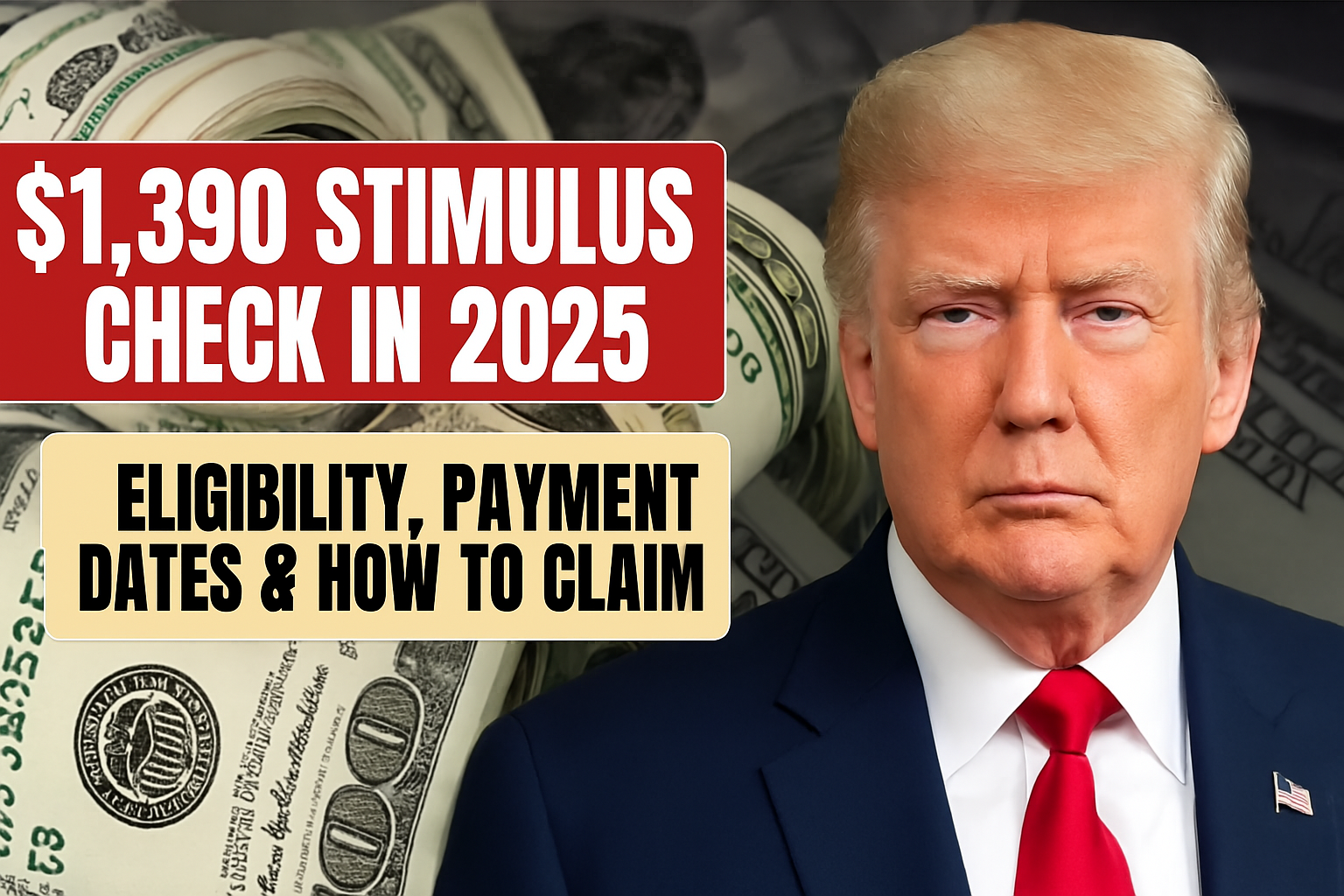A new round of stimulus checks worth $1,390 is expected to reach eligible Americans in 2025. While this financial relief offers timely support amid rising living costs, many are asking: Do I need to pay tax on this payment? And do I need to apply to receive it? Here’s a complete breakdown of what to expect, who qualifies, and how to claim the amount.
Table of Contents
- Overview of the $1,390 Stimulus Check
- Is the Stimulus Check Taxable?
- Who Is Eligible for the 2025 Payment?
- Do You Need to Apply?
- How Will the Payment Be Sent?
- What to Do If You Don’t Receive It
- FAQs
- Final Thoughts and Key Reminders
What Is the $1,390 Stimulus Check for 2025?
The $1,390 stimulus check is part of a federal economic relief initiative designed to support low- and middle-income households facing rising inflation, housing costs, and post-pandemic recovery challenges.
This stimulus is similar to the Economic Impact Payments issued during the pandemic and is aimed at stimulating spending, reducing debt burdens, and offering basic financial security to qualifying individuals and families.
Is the $1,390 Stimulus Payment Taxable?
No. The $1,390 stimulus check is not considered taxable income.
According to the IRS, this payment will be treated as a refundable tax credit, meaning:
- It will not increase your taxable income
- It will not affect your 2025 federal tax return
- You do not need to report it as income when filing taxes
However, if you receive additional state-level stimulus payments, check with your local tax agency to determine if state taxes apply.
Who Qualifies for the Stimulus Check in 2025?
Eligibility is generally based on income level, filing status, and citizenship or residency status.
To qualify, you must:
- Be a U.S. citizen or permanent resident
- Have a valid Social Security number
- Have an Adjusted Gross Income (AGI) below the following thresholds:
- $75,000 or less for single filers
- $150,000 or less for joint filers
- $112,500 or less for head of household
Those earning above these thresholds may receive a reduced amount or be phased out entirely.
Do You Need to Apply to Receive It?
In most cases, no application is required.
If you’ve filed a 2023 or 2024 federal tax return, the IRS will use that information to determine eligibility and send your payment automatically.
However, you may need to apply if:
- You did not file taxes for 2023 or 2024 and are not required to file
- You’re a non-filer but receive federal benefits (e.g., Social Security, SSDI, SSI, VA benefits)
- You had no income but still meet eligibility criteria
In these cases, the IRS is expected to launch an online tool or portal, similar to previous stimulus rollouts, for non-filers to submit their information.
How Will You Receive the $1,390?
The IRS will distribute payments through:
| Method | Details |
|---|---|
| Direct Deposit | Sent to the bank account on file with IRS |
| Mailed Paper Check | Sent to the most recent mailing address |
| Prepaid Debit Card | Used in specific cases, especially for non-filers |
To avoid delays, make sure your banking and mailing information is up to date on your IRS account.
Didn’t Get Your Stimulus? Here’s What to Do
If you expected to receive the $1,390 but haven’t gotten it, you can:
- Track your payment via the IRS “Get My Payment” tool (once live)
- Check your eligibility and tax return status
- Claim it as a Recovery Rebate Credit on your 2025 tax return, if necessary
This ensures you receive your payment even if you were missed during the initial rollout.
Frequently Asked Questions
1. Will the stimulus affect my government benefits (like SNAP or SSI)?
No. The stimulus is not counted as income or a resource for most federal benefit programs.
2. Can I receive the stimulus if I owe back taxes?
Yes. The IRS has confirmed that stimulus checks are not offset for past-due tax debts or federal liabilities.
3. What if I recently moved or changed banks?
Update your contact and banking info with the IRS as soon as possible to prevent delays.
Final Thoughts: What You Should Do Now
The $1,390 stimulus check in 2025 is a much-needed financial lifeline for millions of Americans. It comes tax-free, is automatically issued for most, and provides crucial support in uncertain times.
🔎 What to do now:
- Ensure your tax filings are up to date
- Keep your IRS and banking info current
- Watch for official announcements on payment dates and portals
For updates, visit the official IRS website regularly and avoid scams or unofficial emails claiming to offer early access.

